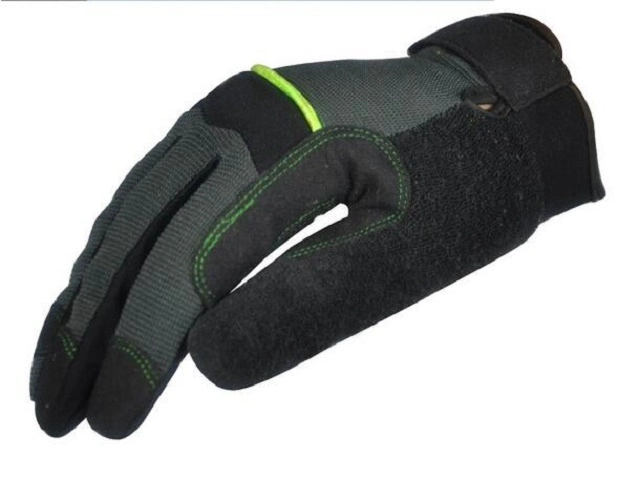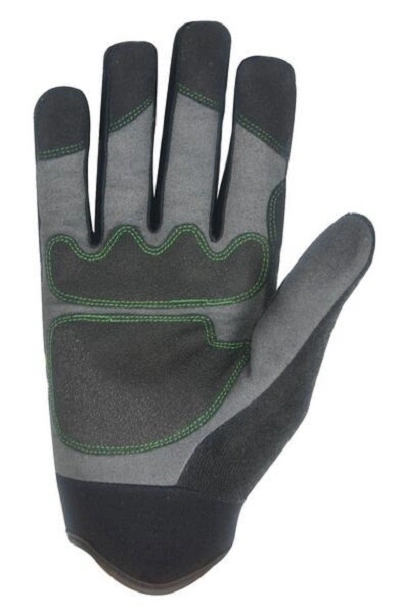Mechanic gloves with good quality of anti-cutting and hard-wearing
1.Synthetic Leather Palm
2.Spandex Back
3.Spandex Thumb
4.Elastic Cuff
Mechanic glove
Model Number:rb10725
Feature: Stretch fabric back for flexibility and fit.
Synthietic leather palm adds durability & comfortable.
Spandex finger is for flexibility.
Neoprene knuckles allows for a better fit.
Elastic cuff keep debris out.
Wing closing strap for perfect adjustments and
easy-on, easy-off.
Pakage:A plastic bag per pair,120pairs per carton(58*28*45)
Quantity/20FCL:4500dozens
Payment term:T/T(30%in advance,70%after shipment)
Application: Automotive/Oil industry/Mechanic/Heavy machine/Household.


| EN 388 Gloves giving protection from mechanical risks Protection against mechanical hazards is expressed by a pictogram followed by four numbers (performance levels), each representing test performance against a specific hazard. 1 Resistance to abrasion Based on the number of cycles required to abrade through the sample glove (abrasion by sandpaper under a stipulated pressure). The protection factor is then indicated on a scale from 1 to 4 depending on how many revolutions are required to make a hole in the material. The higher the number, the better the glove. See table below. 2 Blade cut resistance Based on the number of cycles required to cut through the sample at a constant speed. The protection factor is then indicated on a scale from 1 to 4. 3 Tear resistance Based on the amount of force required to tear the sample. The protection factor is then indicated on a scale from 1 to 4. 4 Puncture resistance Based on the amount of force required to pierce the sample with a standard sized point. The protection factor is then indicated on a scale from 1 to 4. If some of the results are markt with a X means that this test performance is not tested. If some of the results are markt with a O means that the glove did not pass the test. | |||||||||||||||||||||||||||||||||||||||||||
| |||||||||||||||||||||||||||||||||||||||||||
This standard defines the general requirements for protective gloves in terms of construction, fitness of purpose, safety, etc
· The gloves themselves should not impose a risk or cause injury.
· The pH of the gloves should be as close as possible to neutral.
· Leather gloves should have a pH value between 3.5 - 9.5.
· The highest permitted value for chromium is 3 mg/kg (chrome VI).
· Specific details of any substance used in the glove which is known to cause allergies
· Sized by reference to an agreed common European hand size, for example minimum length.